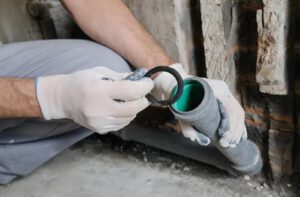 Installing or replacing drain pipes is not as difficult as it may seem. Unlike other plumbing projects, drain pipe installation does not require advanced skills. All it takes is some basic knowledge and experience. Listed below are some tips on Drain Pipe Installation Annapolis MD. Read on to learn more. Once you’ve completed the steps above, you’ll be ready to tackle the next project. If you’re not comfortable working with your hands, you can hire a professional plumber.
Installing or replacing drain pipes is not as difficult as it may seem. Unlike other plumbing projects, drain pipe installation does not require advanced skills. All it takes is some basic knowledge and experience. Listed below are some tips on Drain Pipe Installation Annapolis MD. Read on to learn more. Once you’ve completed the steps above, you’ll be ready to tackle the next project. If you’re not comfortable working with your hands, you can hire a professional plumber.
Before tackling the installation:
- Start by preparing the trench.
- Dig a trench at least eight to 10 inches wide and 16 to 18 inches deep, extending up to the downspout on your house.
- Remove all rocks and roots from the bottom of the trench.
- Once the trench is level, slide the string down a half-inch.
This slope ensures water runs down the drainage pipe instead of around the structure. Make sure to rip out any landscaping fabrics or sod before starting the installation.
Installing downspouts is a relatively simple process. Rather than digging the soil around the home, you can just extend downspouts. PVC pipes can be buried to direct water away from the house. If the downspouts are not installed correctly, they may cause clogging and damage to your foundation. The installation of a downspout requires the use of a downspout connector and a downspout, which are essential tools for a successful installation.
Another popular method of drain pipe installation is French drain. A French drain works on the same principle. The trench must be dug at a slope of approximately one inch for every eight feet of length. A level string tied between stakes can be used to measure the distance from a reference point to the bottom of the trench. If you’re installing a French drain on your property, you’ll need to dig a trench at least two feet wide.
When choosing the pipe, you should consider the location where you’d like the drain installed. If you don’t want to dig up the soil, you can cover the pipes with dirt. This will provide additional support for the drainage system. Another important factor is the type of drainage system that you choose. PVC pipes are the most common type, but other types of pipes can be used as well. When choosing a drainage pipe, make sure it is installed correctly and is hooked up to the gutters.
A good example of a poorly installed drain pipe is a faulty one. Sewage water that leaks through an improperly installed drain pipe can enter the water supply, which is an extremely dangerous situation for your health. Broken drain pipes can also spill into the ground, which means that you’re at risk of getting sick or even dying. This is why the pipe installation process must be done carefully and correctly. So, what are the steps to drain pipe installation?
When installing drain pipes, make sure to use insulated drain pipe and support it with galvanized steel hangers to prevent sagging. Sagging drain pipes can lead to clogs and slime formation, so you should consider the location of the support. A floor trap that discharges to the outside should be fitted with an appropriate adaptor so that condensate water will not soak into the concrete floor. This prevents the development of slimes.
When evaluating the costs of French drain installation, you should keep in mind that it is not just the materials and labor that determine the cost. You can hire a drainage expert, but the amount you pay depends on how much work you need them to do. DIY projects often cost less than professional installations and can save you money in the long run. And since the process of installing a drainage pipe requires some skill and expertise, it’s wise to consult with an expert before starting a project.
When installing drain pipe, consider the slope of the pipes in the trench and the distance between the vent and the soil stack. Generally, a slope of about two to four percent is appropriate. However, if your slope is too steep, the water may overflow and cause a backup in the pipes. If your pipe is too steep, solids will accumulate and can cause clogs. A deeper slope will not work, so you should use landscaping fabric or sod to cover it.
A French drain can solve these issues by collecting the water trapped under the asphalt. It can then channel the water away into a catch basin or ditch. Excess water under the asphalt will saturate the soil underneath and cause the asphalt to flex, making the asphalt soft. And if this water is not removed, it will cause a puddle of water that may be a breeding ground for mosquitoes. To avoid this problem, a French drain can act as a shield, diverting water away from the patio and out of the way.
